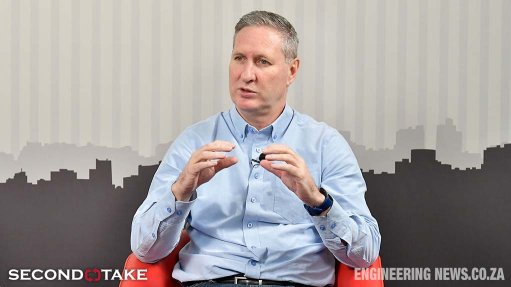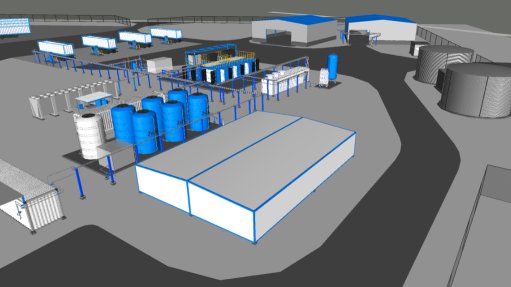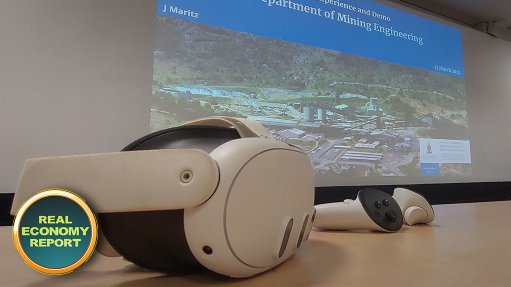Innovative lending models are unlocking financing and driving inclusion for SA’s SMEs
This article has been supplied and will be available for a limited time only on this website.
By: Altesh Baijoo - Chief Investment Officer and MD (SA), Flow48
Globally, small and medium-sized enterprises (SMEs) struggle to secure financing through conventional banking channels. Despite accounting for around 34% of the economy, 60% of employment, and 91% of formalised business, South African SMEs remain trapped in a paradox. The SME funding gap in the country stands at an estimated R550 billion[1], with only 15% of SMEs currently able to access finance through traditional banks.
Why does this problem persist?
Firstly, many entrepreneurs lack formal credit histories – often as a result of operating outside of formal banking systems. Without property ownership or valuable assets to pledge as collateral, they fall at the first hurdle of traditional loan assessments.
Geographic barriers also compound these challenges. Bank branch networks heavily favour urban centers and wealthier suburbs, creating physical barriers to accessing financial services for township and rural enterprises. Even when physical access is possible, documentation requirements, language barriers, and complicated application processes create additional obstacles.
This exclusion has far-reaching consequences. Without access to formal credit, promising businesses either fail to launch or remain trapped, unable to scale despite market demand for their products or services. Fortunately, emerging technologies are injecting innovation into traditional financing models, expanding the range of alternative lending options available for small companies. These alternative models are fast becoming essential to South Africa’s SME ecosystem, and similarly globally, both addressing financing gaps in the market while providing tailored solutions for businesses at different stages of their growth.
Expanding pathways to inclusion
The alternative lending landscape is creating advantageous avenues for previously excluded businesses. By prioritising business performance and potential over traditional metrics, disruptive models are diversifying the SME financing landscape.
Two of these alternative approaches show particular promise for South African SMEs: revenue-based financing (RBF), which allows businesses to repay funding as a percentage of their income; and invoice-based financing (IBF), which enables them to unlock cash flow by borrowing against outstanding customer invoices.
Rather than focusing on historical credit data or collateral, RBF evaluates a business based on its current performance and future potential. Lenders provide capital in exchange for a percentage of ongoing revenues until the loan, plus a predetermined fee, is repaid.
This model offers several advantages for smaller businesses. Repayments are designed to scale with business performance, easing financial pressure during slower periods. The application process is often streamlined through digital platforms and algorithms, allowing for more efficient access to capital. And by leveraging alternative data sources – such as point-of-sale (POS) systems and enterprise resource planning (ERP) software – to assess eligibility. This shift allows businesses to be assessed on their current operational strength rather than outdated credit history, opening doors for many who have previously been excluded from the formal financial system.
On the other hand, IBF addresses another critical challenge for small businesses: cash flow constraints caused by delayed payments. Through IBF, businesses can sell their unpaid invoices to lenders at a discount, receiving immediate capital rather than waiting 30, 60, or even 90 days for payment.
This financing method is particularly powerful for small suppliers dealing with large corporations, where payment delays are common. By converting accounts receivable into immediate liquidity, IBF helps businesses maintain operations, meet payroll obligations, and pursue growth opportunities without taking on traditional debt. This solution not only improves liquidity but reduces reliance on slow-paying customers. For example, if an SME has issued invoices worth R500,000 with payment terms of 90 days, an IBF lender can advance up to R400,000 immediately. Once the client pays the invoice, any remaining balance is remitted to the SME.
While these models continue to bridge the SME financing gap, the next crucial step in expanding access is making it easier for SMEs to discover new funding pathways.
Evolving access through smarter aggregators and partners
As the alternative lending ecosystem matures, the platforms that connect SMEs to financing are also becoming more sophisticated. Companies that specialise in linking businesses with alternative lenders – including aggregators and brokers – are transforming how small businesses find and access capital.
These platforms collect and analyse business data to streamline the lending journey, removing the burden of navigating a complex financial landscape without expertise. Many now use SEO strategies to connect SMEs with lenders like Flow48, ensuring visibility at the right moment in a business’s growth journey.
Beyond marketing, aggregators and brokers are building advanced technology stacks, with some establishing super API capabilities that integrate directly with lenders via APIs, enabling real-time, machine-to-machine underwriting data transfer and communication, for faster loan processing and decision-making. This seamless integration reduces friction and improves the speed and efficiency of approvals.
In addition to connecting borrowers and lenders, aggregators and brokers play a crucial educational role. They break down complex financial products, offering simple comparisons and insights that empower entrepreneurs, especially in underserved communities, to make confident, informed choices.
By evolving alongside the broader lending ecosystem, they are not just intermediaries – they’re becoming key enablers of inclusive, scalable SME growth.
From barriers to breakthroughs
The emergence of innovative financing solutions represent a pivotal shift in South Africa's SME landscape. As traditional banking continues to fall short for the majority of small businesses, alternative lending options like revenue-based financing and invoice-based financing are filling critical gaps in the market. These models evaluate businesses based on their actual performance and potential, which creates pathways to financial inclusion for previously excluded entrepreneurs.
The evolution of this ecosystem, supported by sophisticated aggregator and broker platforms and digital infrastructure, signals a transformation in how capital flows to deserving businesses. By reducing geographic barriers, simplifying application processes, and leveraging real-time data, these innovations are gradually dismantling the structural obstacles that have historically prevented SMEs from accessing finance.
For South Africa to fully realise the economic potential of its SME sector, which already accounts for a third of the economy and the majority of employment, continued investment in and expansion of these cutting-edge lending solutions is essential. As the R550 billion funding gap begins to narrow, we can expect to see greater business formation, improved scaling capabilities, and ultimately a more inclusive and dynamic economy that benefits all South Africans.
Comments
Press Office
Announcements
What's On
Subscribe to improve your user experience...
Option 1 (equivalent of R125 a month):
Receive a weekly copy of Creamer Media's Engineering News & Mining Weekly magazine
(print copy for those in South Africa and e-magazine for those outside of South Africa)
Receive daily email newsletters
Access to full search results
Access archive of magazine back copies
Access to Projects in Progress
Access to ONE Research Report of your choice in PDF format
Option 2 (equivalent of R375 a month):
All benefits from Option 1
PLUS
Access to Creamer Media's Research Channel Africa for ALL Research Reports, in PDF format, on various industrial and mining sectors
including Electricity; Water; Energy Transition; Hydrogen; Roads, Rail and Ports; Coal; Gold; Platinum; Battery Metals; etc.
Already a subscriber?
Forgotten your password?
Receive weekly copy of Creamer Media's Engineering News & Mining Weekly magazine (print copy for those in South Africa and e-magazine for those outside of South Africa)
➕
Recieve daily email newsletters
➕
Access to full search results
➕
Access archive of magazine back copies
➕
Access to Projects in Progress
➕
Access to ONE Research Report of your choice in PDF format
RESEARCH CHANNEL AFRICA
R4500 (equivalent of R375 a month)
SUBSCRIBEAll benefits from Option 1
➕
Access to Creamer Media's Research Channel Africa for ALL Research Reports on various industrial and mining sectors, in PDF format, including on:
Electricity
➕
Water
➕
Energy Transition
➕
Hydrogen
➕
Roads, Rail and Ports
➕
Coal
➕
Gold
➕
Platinum
➕
Battery Metals
➕
etc.
Receive all benefits from Option 1 or Option 2 delivered to numerous people at your company
➕
Multiple User names and Passwords for simultaneous log-ins
➕
Intranet integration access to all in your organisation

















